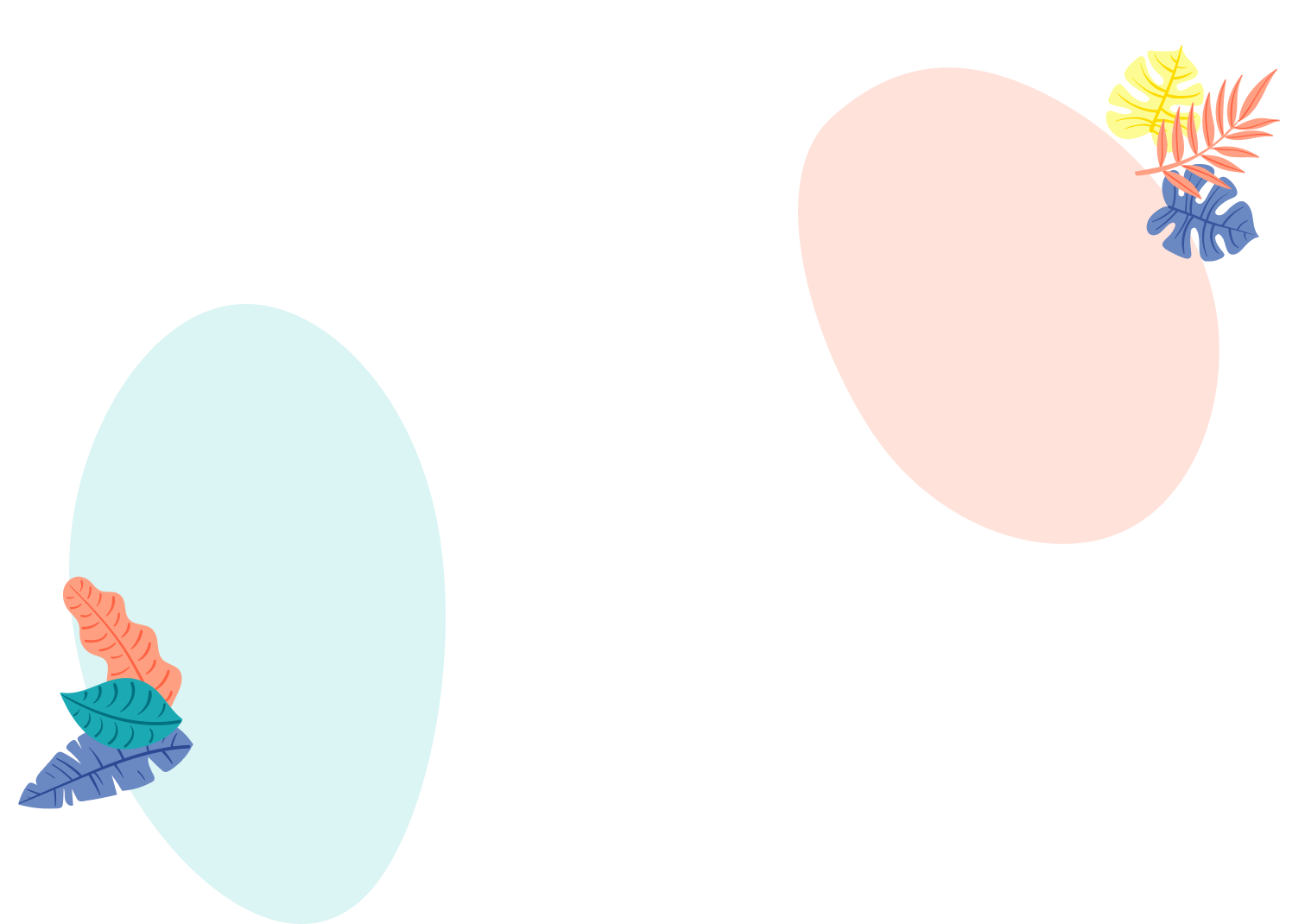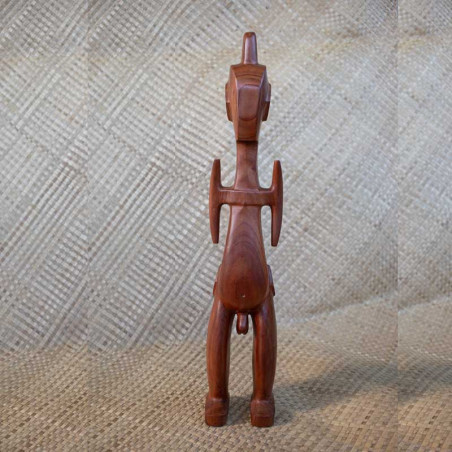- -16%








If you are passionate about selling Polynesian art online, if you want to enrich your collection with splendid, authentic and original Gambier art sculptures, or if you are looking for THE unique piece that will bring an exotic touch to your home, you have come to the right place.
The history and significance of the Rao God sculpture
The God Rao sculpture is an anthropomorphic representation of the god Rongo, one of the principal deities of Polynesian mythology. According to legend, Rongo is the son of the sky god and the earth goddess, and the twin brother of Tane, the forest god.
Rongo is the god of peace, agriculture and fertility. He is associated with the rainbow, symbolizing his passage between heaven and earth, and with rain, which nourishes crops of fruit bread, the Polynesian staple.
Rongo is also the protector of chiefs and warriors, who pay homage to him during ritual ceremonies.
Symbolism and roles in Polynesian culture
The Rao God sculpture is a sacred object, expressing the link between men and gods, between the visible and invisible worlds. It is the medium of prayer, meditation and magic. It also bears witness to the history and culture of the Polynesian peoples, who created works of art of great beauty and finesse, despite geographical isolation and material constraints.
The sculpture of Dieu Rao is a symbol of the richness and diversity of Polynesian art, reflecting the worldview and values of the people of Oceania.
Traditional sculpting techniques
The Dieu Rao sculpture is made from miro wood, a precious, fragrant tree that grows in tropical forests. The wood is carved using stone, bone or shell tools, then polished with leaves or sand.
The sculpture is then decorated with natural pigments, such as charcoal, clay or turmeric. The sculpture features stylized, geometric lines that emphasize the shapes of the body and face. The eyes are often inlaid with mother-of-pearl or shell to give them added sparkle.
The sculpture is sometimes adorned with feathers, plant fibers or shells, to give it added relief and color.
Find an authentic Rao God sculpture online
Have you been seduced by the beauty and meaning of the Rao God sculpture, and would like to acquire one for your personal collection or as a gift for a loved one? But how can you find a genuine Rao God sculpture online, without being ripped off by dishonest sellers or shoddy fakes? Here are a few tips to help you make the right choice and get a good deal.
Identifying reliable sellers
The first criterion for finding an authentic Rao God sculpture online is the reliability of the seller. There are many sites offering Rao God sculptures, but not all of them are serious or respectful of Polynesian art and culture.
To avoid unpleasant surprises, it's best to choose a site specializing in online Polynesian art sales, with recognized expertise and reputation, such as [artsper], which guarantees you quality local artworks, selected by partner galleries and professional artists. You can also consult customer reviews, conditions of sale, delivery and return, and certificates of authenticity provided by the site.
Sculpture authenticity criteria
The second criterion for finding an authentic Rao God sculpture online is the quality and origin of the sculpture. There are indeed ancient Rao God sculptures, dating back to the 10th century or more, which are very rare and expensive museum pieces, such as the one on display at the [musée du quai Branly - Jacques Chirac] in Paris. There are also contemporary Dieu Rao sculptures, made by modern Polynesian artists who perpetuate the art of Gambier sculpture, using techniques and materials similar to those of the ancients.
These sculptures are more accessible and more varied, but they must meet certain criteria of authenticity, such as the type of wood used (miro), the shape and decoration of the sculpture, and the artist's signature. You can find out about these criteria by consulting reliable sources, such as books, articles or experts in Polynesian art.
Understanding value and price
The third criterion for finding an authentic Rao God sculpture online is the sculpture's value and price. The value of a Rao God sculpture depends on several factors, such as its age, rarity, quality, provenance, state of preservation and reputation. The price of a Rao God sculpture varies according to supply and demand, the art market and the method of sale (auction, outright purchase, etc.).
It is therefore important to compare the prices of the various Rao God sculptures available online, taking these factors into account, and to set yourself a reasonable budget. You can also take advantage of promotional offers, discounts or payment facilities offered by certain sites, such as [artsper], which allows you to benefit from free delivery, a money-back guarantee, or payment in several monthly instalments.
Integrating a Rao God sculpture into your décor
Have you found the Rao God sculpture of your dreams and would like to integrate it into your décor? Here are a few tips on how to showcase this unique work of art and create a Polynesian, tropical atmosphere in your home.
Polynesian-inspired decorating tips
Polynesian decor is all about tropical plants, bright colors, light fabrics and, above all, ornamental accessories. To create a Polynesian ambiance, look for tropical greenery such as palm, banana or pineapple trees, which add an exotic touch.
Choose warm, bright colors like yellow, red, orange or pink, reminiscent of island flowers and fruits. Opt for natural, flowing fabrics like cotton, linen or raffia, which give a fresh, light feel. Finally, don't forget accessories that make all the difference, such as shells, pearls, feathers, necklaces or woven baskets, which add charm and character to your decor.
Preservation and care of sculptures
A wooden sculpture requires a little maintenance to preserve its beauty over the long term. Whether small or large, for interior or exterior decoration, varnished, waxed or in raw wood, here are the best practices to follow to ensure that your sculpture remains as beautiful as the day it was made. Dust your sculpture regularly with a soft, dry cloth.
This will prevent the build-up of dust and dirt that could damage the wood in the long term. For a thorough cleaning, mix lukewarm water with a little mild soap or non-abrasive liquid detergent. Soak a soft cloth in the solution and gently wipe the surface of the carving. Avoid letting the water stand on the wood for too long.
Carefully dry the sculpture with a dry, absorbent cloth. Make sure that no residual moisture remains, as this could lead to the formation of mold or water spots.
Regularly apply a protective finish, such as beeswax or clear varnish, to provide a barrier against moisture and dust. Follow the manufacturer's instructions for recommended application and frequency. Avoid direct exposure to sunlight or heat, which can discolor and dry out the wood over time. If possible, place your sculpture in a shady spot or cover it with a tarpaulin during periods of high heat.
Similarly, the proximity of a heater may cause excessive cracking. Watch for cracks and deformations, which are normal over time, and take steps to minimize them, such as applying an appropriate oil finish.
The cultural impact of owning such a work
To own a sculpture of the Rao God is to own a piece of Polynesian history and culture. It's also a way of supporting the local artists who perpetuate the tradition and art of the Gambiers.
Finally, it's a way of opening up to a different vision of the world, based on respect for nature and the link between men and gods. A Rao God sculpture is more than just a decorative object; it's a work of art that expresses a unique identity, spirituality and creativity.
By integrating it into your décor, you enrich your environment and your spirit.
Through this article, you have been immersed in the exceptional and captivating world of the Rao God sculpture, a Polynesian art gem that invites you to an uplifting cultural and spiritual immersion. You'll discover the history and profound significance of this majestic piece of art, representing the god Rongo, symbol of peace, agriculture and fertility. You've also been guided on the path to finding an authentic Rao God sculpture online, by opting for a specialized and trusted platform such as [artsper], a guarantee of access to authentic Polynesian creations, offered at attractive prices and with a free delivery option.
Finally, you've discovered how to incorporate a Rao God sculpture into your living space, to generate an inviting Polynesian and tropical atmosphere in your home. So don't delay, and allow yourself to acquire a Rao God sculpture: a token of beauty, meaning and happiness infused into your everyday life!
Description
Tou wood carving ( Oceania walnut )
Weight : 2.150 kG
Height 67 cm
Width 15 cm